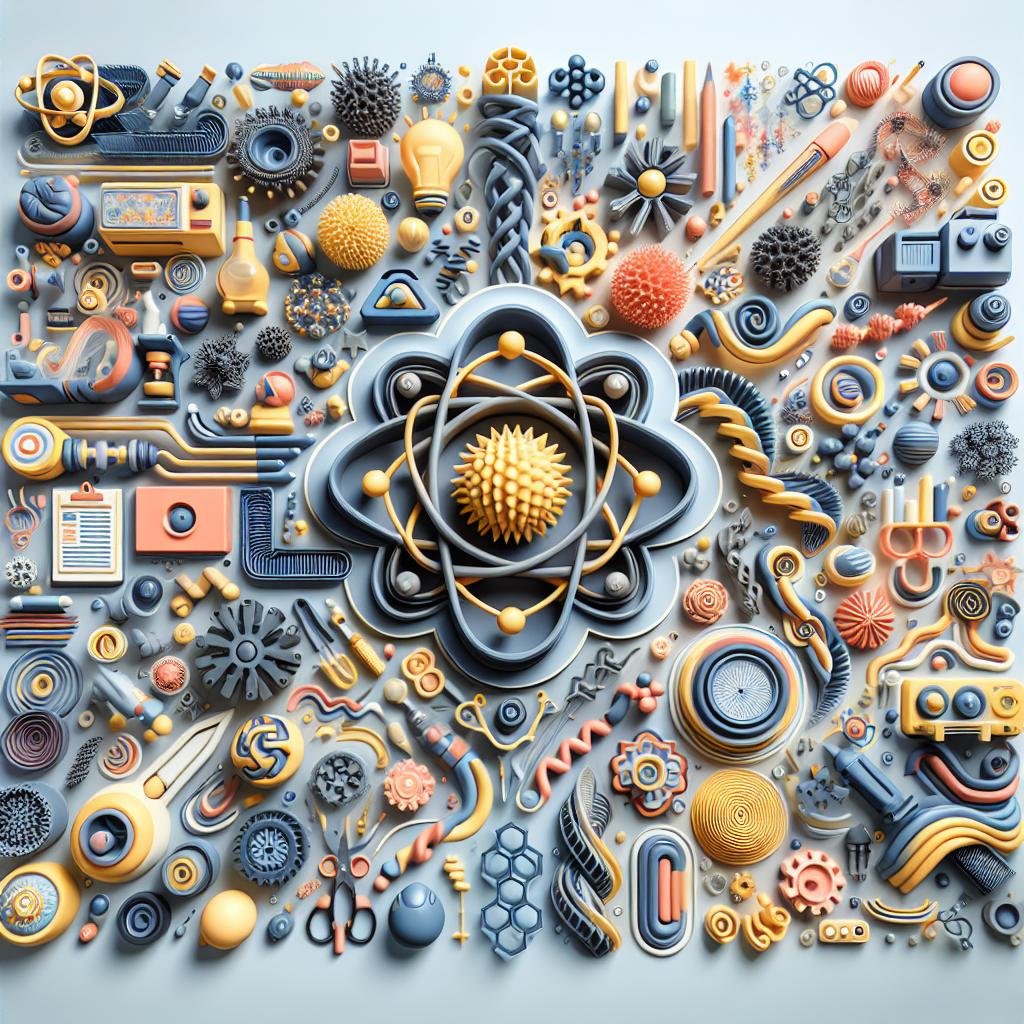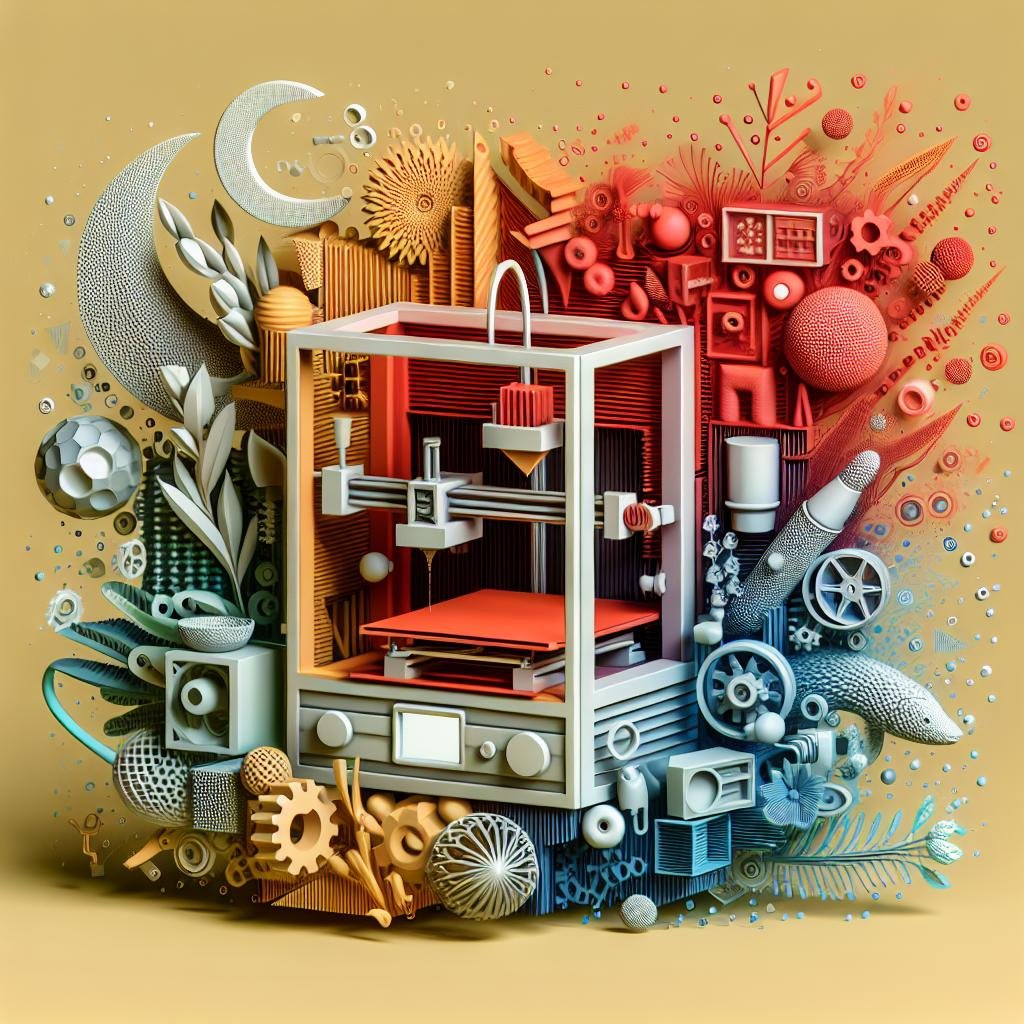Imagine a world where anything you dream up can be brought to life with the push of a button. This isn’t science fiction; it’s the reality of 3D printing—a technology that’s been stirring up excitement, curiosity, and, let’s be honest, a fair share of myths. From visions of printing entire homes overnight to concerns about futuristic replicators, the realm of 3D printing is swathed in alluring tales and widespread misconceptions. But what’s fact, and what’s mere conjecture? Join us as we plunge into the fascinating world of 3D printing, debunking common myths and setting the record straight.Whether you’re a tech enthusiast, an inventor at heart, or just someone who loves a good tale, prepare to have your curiosity piqued and your questions answered as we navigate the intricate layers of this groundbreaking technology.
Exploring 3D Printing Myths Where Did We Go Wrong
The allure of 3D printing frequently enough gets overshadowed by a whirlwind of myths that seem to cling to its revolutionary potential. perhaps one of the most pervasive misconceptions is the idea that 3D printing is easy and failsafe.While modern desktop 3D printers have indeed made the technology more accessible, there’s far more to creating intricate designs than just pressing a button. Users often overlook the importance of having a deep understanding of 3D modeling software,materials,and machine maintenance.To complicate matters further, challenges such as calibration issues, unreliable quality, and the intricate play of material science often slip under the radar for enthusiasts eager to begin their inventiveness. Nevertheless, the advancements in the field continue to make the learning curve less daunting.
- It’s not just plug and play: There’s a steep learning curve for beginners.
- Not every material is universally print-amiable: Selection depends on the printer’s capabilities.
- Original designs require skillful 3D modeling: Pre-made templates may not suffice.
Another myth steeped in almost every conversation is that 3D printers will somehow replace customary manufacturing entirely. This notion is more fantasy than fact. Traditional manufacturing methods excel in areas where 3D printing currently falls short, such as mass production and the processing of certain materials. However, where 3D printing shines is in prototyping and low-volume production, affording companies the luxury of producing complex, customizable designs quickly and with intricate detail. The harmony between traditional techniques and modern 3D printing creates possibilities previously dreamed unimaginable. Rather than an outright replacement, it’s more accurate to see 3D printing as a complementary ally to conventional methods, expanding the horizons of design and innovation.
| myth | Reality |
|---|---|
| 3D Printing is Easy | Requires technical knowledge |
| Replaces Traditional Manufacturing | Enhances and complements |
| Universal for All Materials | Material-dependent technicalities |

separating Fact from Fiction The True capabilities of 3D Printing
3D printing, often perceived as a magic wand capable of materializing any object instantly, has been enveloped in myths that elevate its status to nearly mythical proportions. The reality is a blend of ingenious possibilities tempered with certain limitations. One popular misconception is that 3D printing is synonymous with rapid production. While it’s true that the technology can be efficient for prototyping and small-scale production,complex and detailed designs might require ample time to perfect.Quality does take time, and each layer needs careful execution to ensure a seamless finish.
- “Will 3D printing replace traditional manufacturing?”: For some niche markets or custom one-off designs, perhaps. However, for mass production, the technology is not there yet.
- “Can 3D printing create anything?”: While its versatility is commendable, it still hinges on material limitations and the feasibility of the design.
- “Is it too expensive?”: Costs have been falling. yet, high-end materials and advanced machines maintain a important price tag, making it less accessible for everyone.
One compelling capability is in customizing solutions, from personalized prosthetics to art installations.Yet, knowing how to differentiate fact from fiction can empower individuals and businesses to integrate 3D printing effectively.Hear’s a quick look at what materials are commonly used, showcasing the diversity of the field:
| Material | Strength | Common Use |
|---|---|---|
| PLA | Moderate | Prototyping |
| ABS | high | Functional Parts |
| Nylon | Very High | End-Use Products |

Beyond the Hype Understanding the Real Costs of 3D Printing
3D printing often dazzles with its promises of speed and innovation, but the reality of its costs is nuanced. Many enthusiasts envision a future where any design can be instantly printed at the push of a button. While this image leans towards reality, the financial aspect tends to be overshadowed. Material expenses go beyond the filament, resin, or powder used. Consider the hidden costs: printer maintenance, software licenses, and training personnel. Moreover, different materials cater to different needs and require specific conditions, which can add up to a larger bill than anticipated. On top of this, the energy consumed during long print runs can translate into significant utility costs.
Another common oversight is the mistaken belief that 3D printing stops at just owning a machine. Beyond the initial purchase, there are recurring costs. from purchasing a range of materials to maintaining an inventory for overnight prints and dealing with failed attempts, all play their part. To provide a clearer understanding, here’s a breakdown:
| Expense Type | Description |
|---|---|
| Materials | Cost of specialized filaments or resins |
| Machine Maintenance | Repair and replacement of worn-out parts |
| Energy Costs | Electricity usage for long print jobs |
| Software | Licenses for design and slicing programs |
Awareness of these costs helps in forming realistic expectations about the investment in 3D printing technology.

From Misunderstandings to Mastery Expert Tips for 3D Printing Success
3D printing has captured the imagination of professionals and hobbyists alike, yet many misconceptions still linger. One common fallacy is that it is as simple as pressing a button and voilà—a complete product appears. In reality,this technology requires meticulous preparation and a deep understanding of the materials and machines involved. Instead of just picking a design and printing, enthusiasts should consider factors like the type of filament, print resolution, and support structures. No one can overlook the learning curve involved in mastering these intricacies, which often comes with trial and error.
- Material Misunderstandings: Not all plastic is created equal; distinguish between PLA, ABS, and others.
- Durability Assumptions: Printed products may need post-processing for added strength.
- Time Expectations: A single project can take hours to print, finishing touches excluded.
Another widespread myth is that any printer can only produce small plastic trinkets. While 3D printers do excel at creating miniature models and prototypes, they are capable of far more substantial and intricate creations. Today’s innovative printers craft everything from metal car parts to biocompatible medical devices. To harness this versatility, it’s crucial to understand the capabilities of different 3D printers, which range from FDM to SLA and beyond. For those new to the field, choosing the right type of printer and understanding its unique attributes is vital for success. Here’s a quick comparison:
| Printer Type | Material | Strengths |
|---|---|---|
| FDM | Plastic Filaments | Cost-effective, Versatile |
| SLA | Liquid Resin | Precision, Detailed |
| SLS | powder-Based | Durable, Complex Geometry |
Q&A
Q: Is 3D printing only for tech experts and engineers?
A: Not at all! One of the biggest misconceptions is that 3D printing is reserved for the geniuses of the tech world. In reality, 3D printing has become incredibly accessible to beginners who might not even know what a “G-code” is. With user-friendly software and a plethora of online tutorials, anyone with a curious mind can start exploring the wonders of 3D printing right from their living room.Q: Can 3D printers only create small objects?
A: While it’s true that many consumer-grade 3D printers have a limited build size, they are not restricted to tiny trinkets. The world of 3D printing encompasses everything from small, detailed figurines to life-sized sculptures and even intricate architectural models. Inventive use of modular design can allow for assembly of large-scale objects piece by piece. In some industries, massive 3D printers produce buildings and aircraft parts—truly elevating the possibilities.
Q: Isn’t 3D printing super slow and inefficient?
A: Patience is a virtue, but modern 3D printing doesn’t require an eternity. Yes, complex projects can take time, but the field is advancing with faster print speeds and new materials. Plus, the ability to customize designs before printing often offsets time spent compared to traditional manufacturing methods. Quick-turn prototypes and reduced wastage make 3D printing an efficient option when considering the bigger picture.
Q: aren’t 3D printed objects always fragile and weak?
A: It’s a common misconception that 3D printed objects crumble at the slightest touch. While early 3D printers might have been limited by the materials available, today’s technology uses everything from durable plastics to metals and even bio-materials. many 3D printed objects are robust enough for real-world applications, from automotive parts to medical implants, proving that they’re anything but flimsy.Q: Can 3D printing replace all traditional manufacturing?
A: While 3D printing is undoubtedly innovative, it’s not a magical substitute for all manufacturing processes. It’s more about complementing traditional methods rather than replacing them. 3D printing excels in areas requiring custom, low-volume, or complex geometries—where traditional methods might fall short. The future likely includes a blend of both technologies, working hand-in-hand to push the boundaries of what’s possible.
Q: Isn’t 3D printing purely for creating prototypes?
A: It once was primarily a tool for prototyping, allowing designers to quickly test ideas. However, 3D printing has evolved considerably, making it possible to produce finished products ready for consumer use. From bespoke jewelry to custom-fit footwear, the scope of 3D printing extends far beyond just sketching out ideas. It’s now a tool for both imagination and production.
Each step in unraveling these misconceptions brings you closer to unlocking the vast potential of 3D printing. With an open mind and a pinch of creativity, you’ll discover that the only limit is your imagination!
Key Takeaways
As we wrap up our exploration of the world of 3D printing, it’s clear that this remarkable technology isn’t confined to the realms of science fiction or exclusive industrial use. By dispelling some of the common misconceptions,we hope we’ve opened up a new outlook on the potential and versatility of 3D printing. Whether you’re an eager enthusiast or a curious newbie, remember that innovation frequently enough begins where imagination dares to tread. So, the next time you hear someone marveling at the idea of printing a new reality, you’ll know they’re not so far from the truth. Until then, keep dreaming, keep printing, and keep building a future layer by layer.

